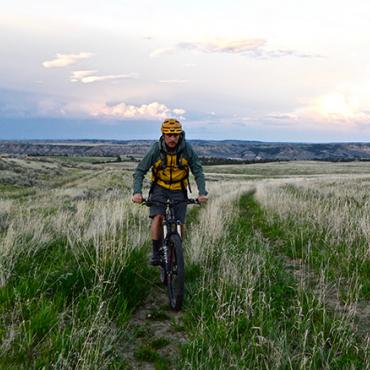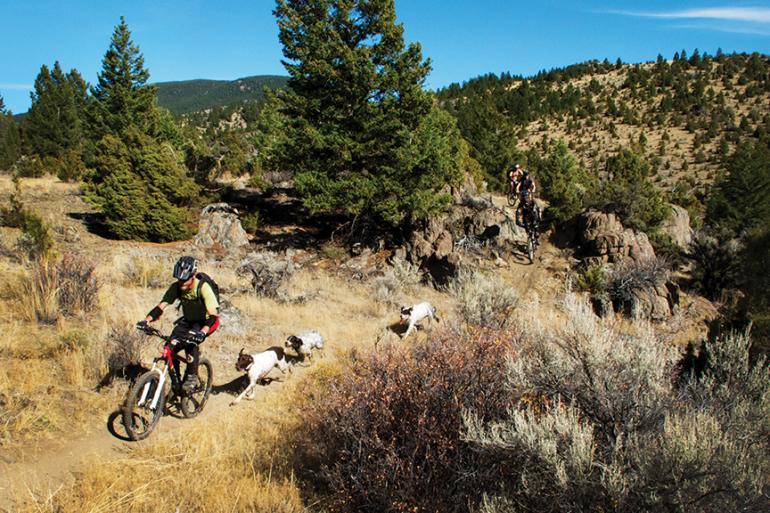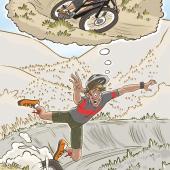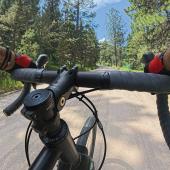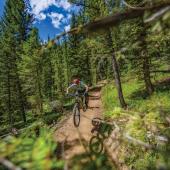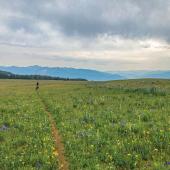Sonic Singletrack
Tuning into the trails at Pipestone.
“This is one of my favorite downhills at Pipestone,” John says, a huge smile betraying his guarded excitement. “Just watch out for the stream crossing at the bottom.” And like that, he’s gone, dipping out of sight with Jackie not far behind as I bring up the rear.
Going last, and never having ridden here before, I rely on the hooting and hollering of the riders in front of me, their exultations providing an audio map of the trail’s obstacles, its steepness and difficulty level, the make-up of its dirt. More than visuals, sounds lay out the descent. Screams of joy or grunts of pain—even grumblings of frustration—map the ride. On this particular section, I know I’m in for a treat, even if I can’t see what lies ahead.
I wait 30 seconds then push off.
I focus on sound. A splash reveals a stream, snapping levers and clicking gears an upcoming climb, laughter a descent. Chains rattle against frames as my companions enter a rocky section. The sound stops—hopefully I won’t hear the snapping of tree limbs or the crunch of bone on rock.
Now, I would never advocate mountain biking with your eyes closed, but listening can change your experience and make you a better rider. Trails unfold visually in front of us, but a sound can give us a hint before we reach an obstacle of what’s to come. It can improve our reaction time, making us more efficient. Sound can encourage us if the crest of a climb is out of sight—if our partners are laughing or hollering, it means the end is near, that we’ll be rolling downhill once again soon.
Sound connects us to our bike as well. The flub-flub-flub of a tube losing air is heard before it’s seen. Screeching brakes mean our pads are worn, but when racing down narrow swaths of trail through hardwood forests and around massive boulders, we glean that information through a loud whine and not by looking at our fork. Creaking seatposts and grinding chains tell us far more about the condition of our ride than we could ever know just by looking at it.
As we dip and roll through sublime singletrack, aimless conversation replaces the sound of heavy breathing, an indication we are riding well and enjoying ourselves and the time spent outside. Up around a bend, I can’t see either of my friends, but I can interpret their tones and imagine their faces. I can hear them smile as we rattle, click, snap, and grind through the trails at Pipestone.
Camp 'N' Ride
Not only does Pipestone offer prime early-season riding, it’s also one of the first places to dry out and warm up for some good ol’ car camping. Here are some tips for riding and camping in this mini-Moab.
Riding
Trying to figure out Pipestone’s many trails will drive you insane. The BLM has a vague map on their website, but it’s best to go with someone who’s ridden there before to guide you through the tight, technical singletrack, flowy cross-country trails, and steep downhills.
Camping
The beauty of Pipestone’s camping is its simplicity. The area is heavily used, and there are campsites everywhere. Take your time and pick one with a view. Rising in the southwest, the Pioneer Mountains typically remain snow-capped well into summer, offering a stunning backdrop after a long day on the trail.
Food & Drink
The last time I camped in Pipestone, the menu had more variety than Nova’s Sunday brunch. A large cast-iron skillet can cook just about anything, so don’t skimp. On that note, maybe this is the trip you spring for a nice bottle of tequila and a gas-powered blender. Once the sun goes down and folks settle in, switch to a quieter method of imbibing, the failsafe barley pop.

